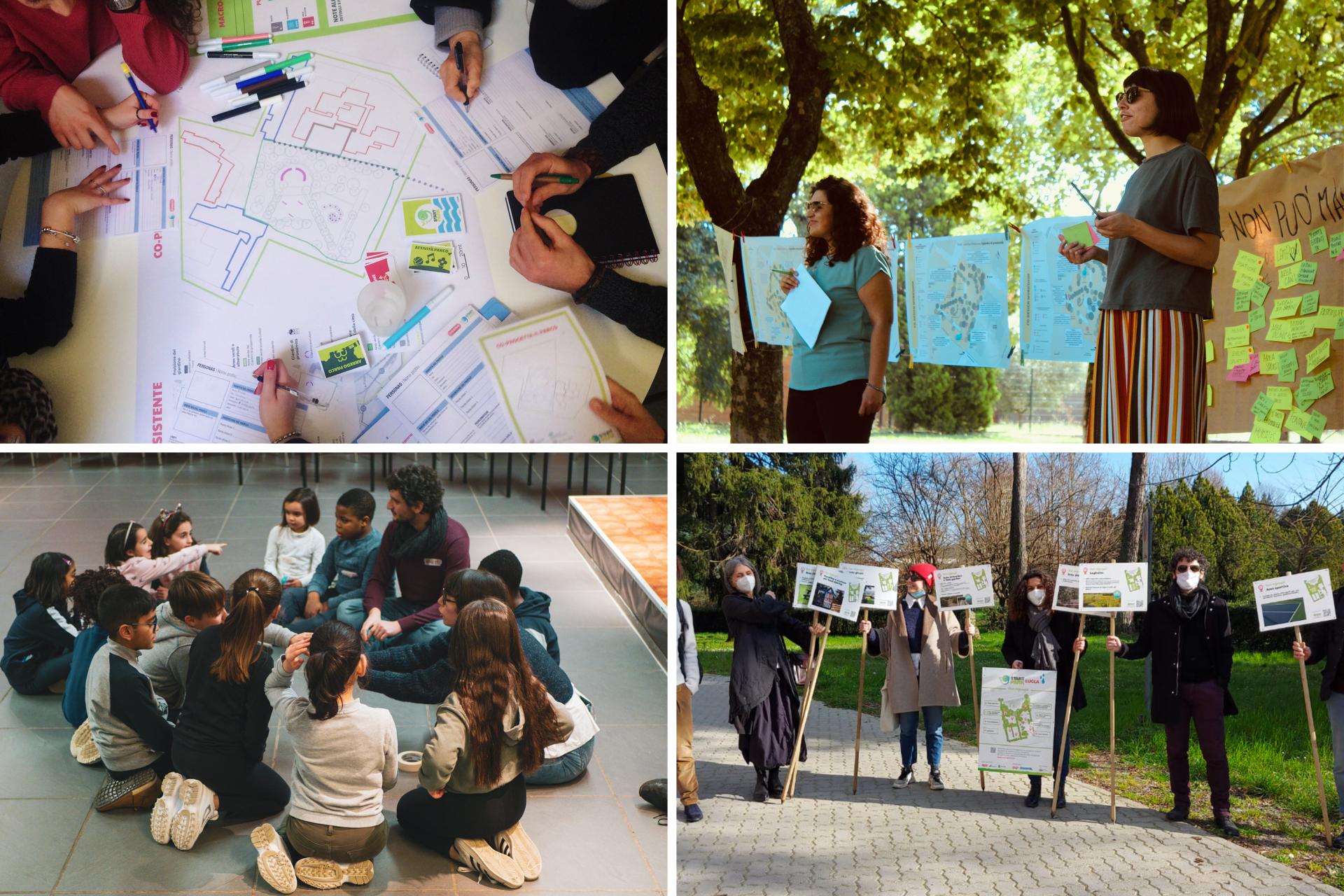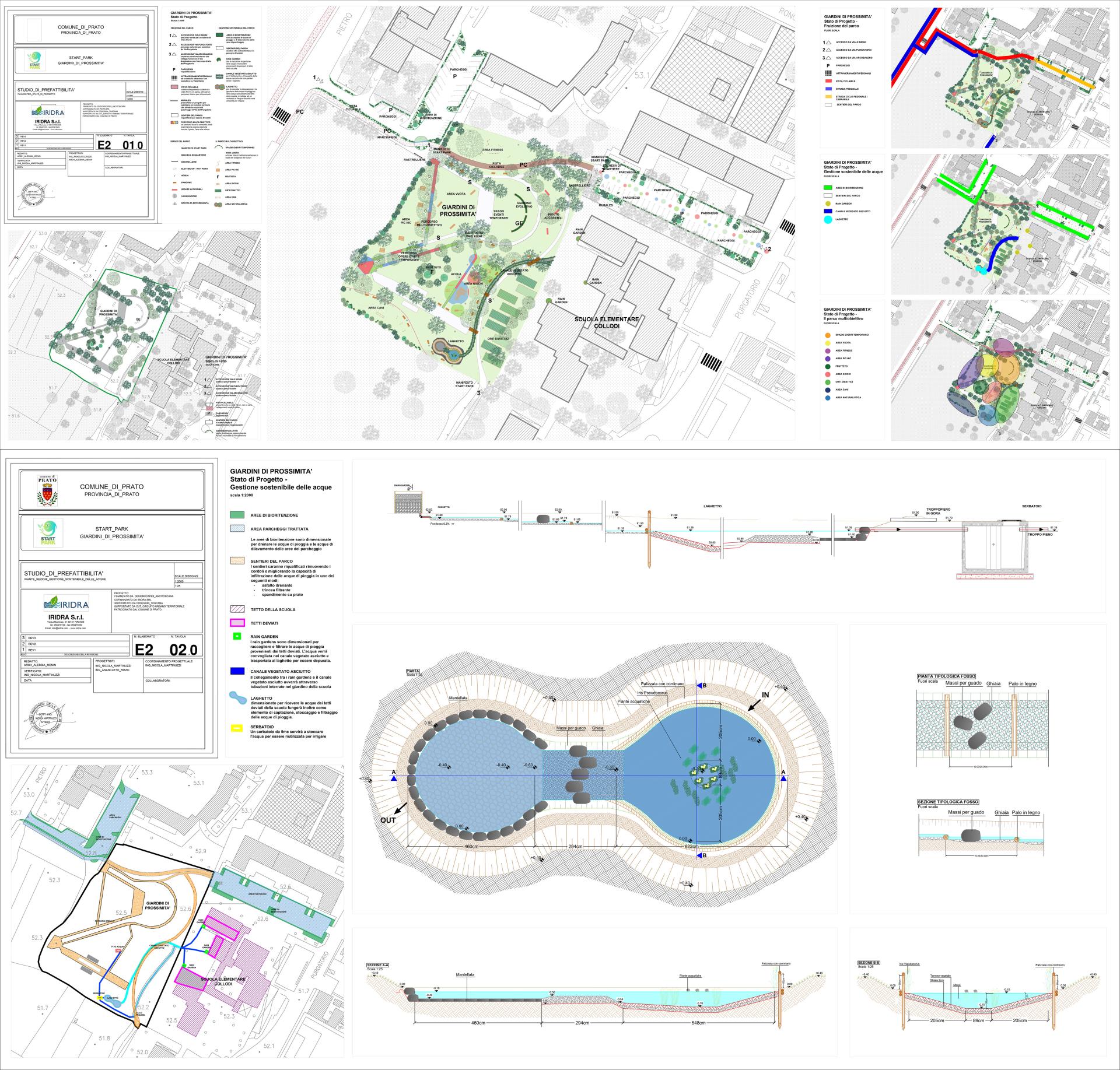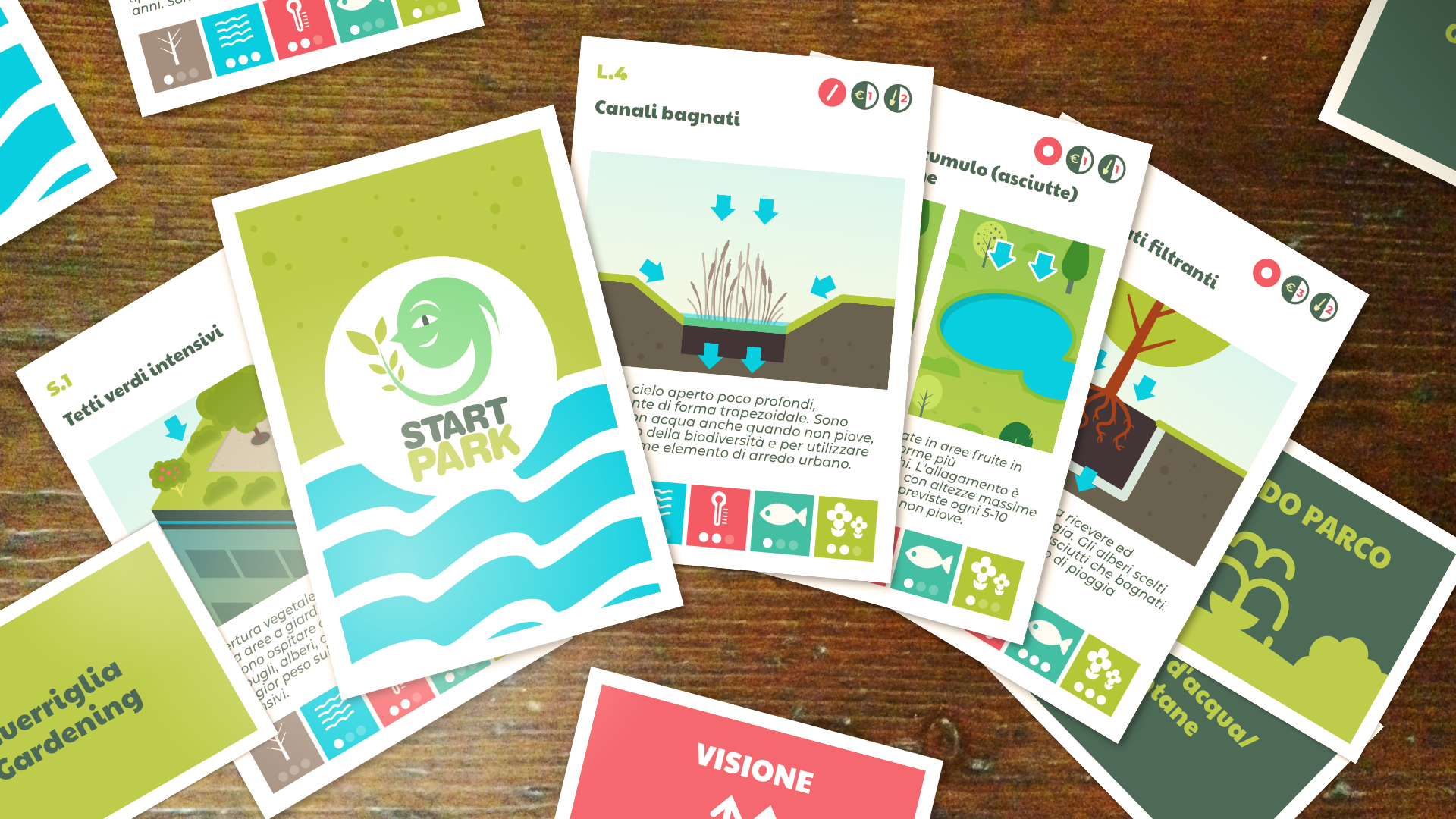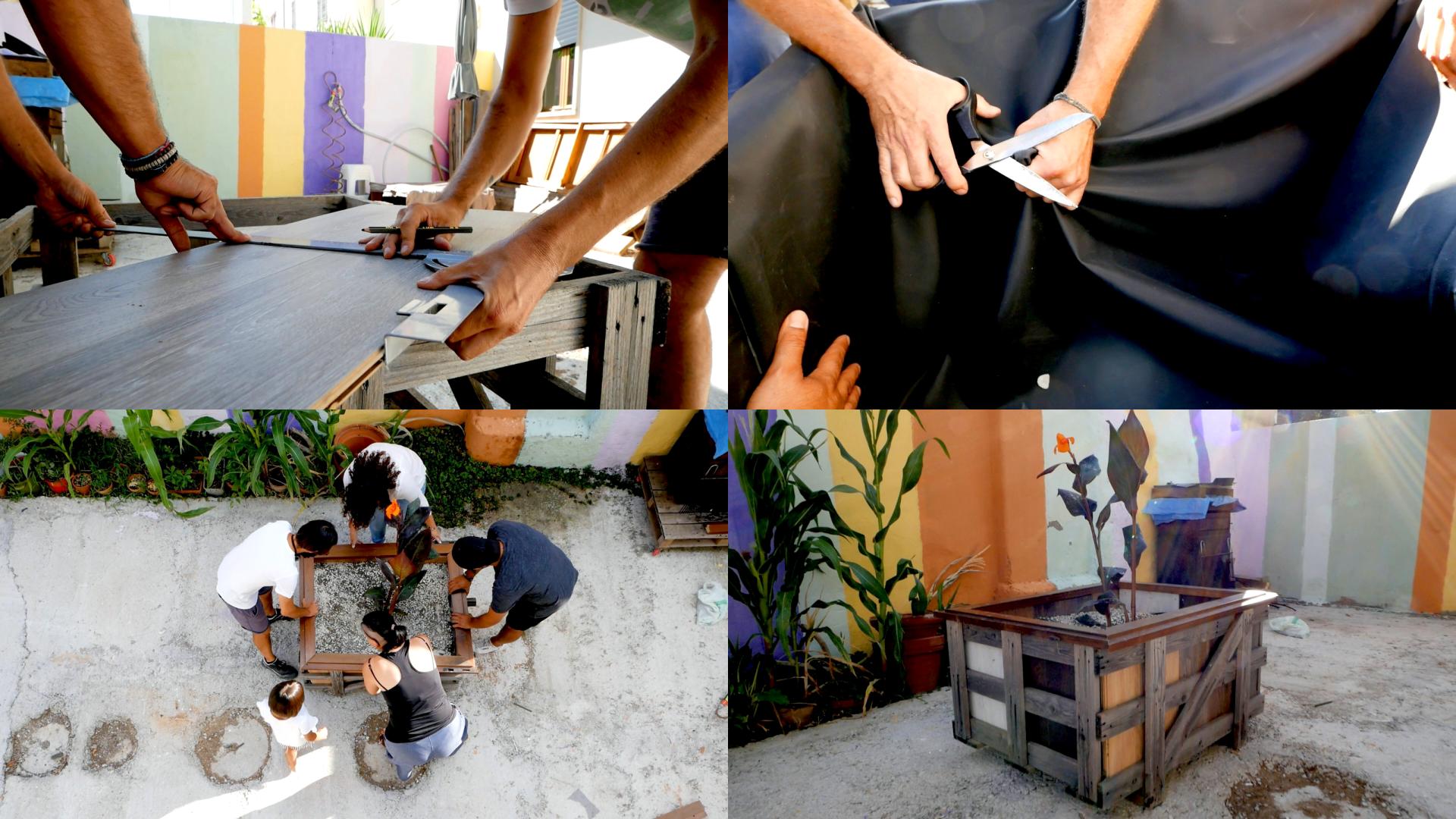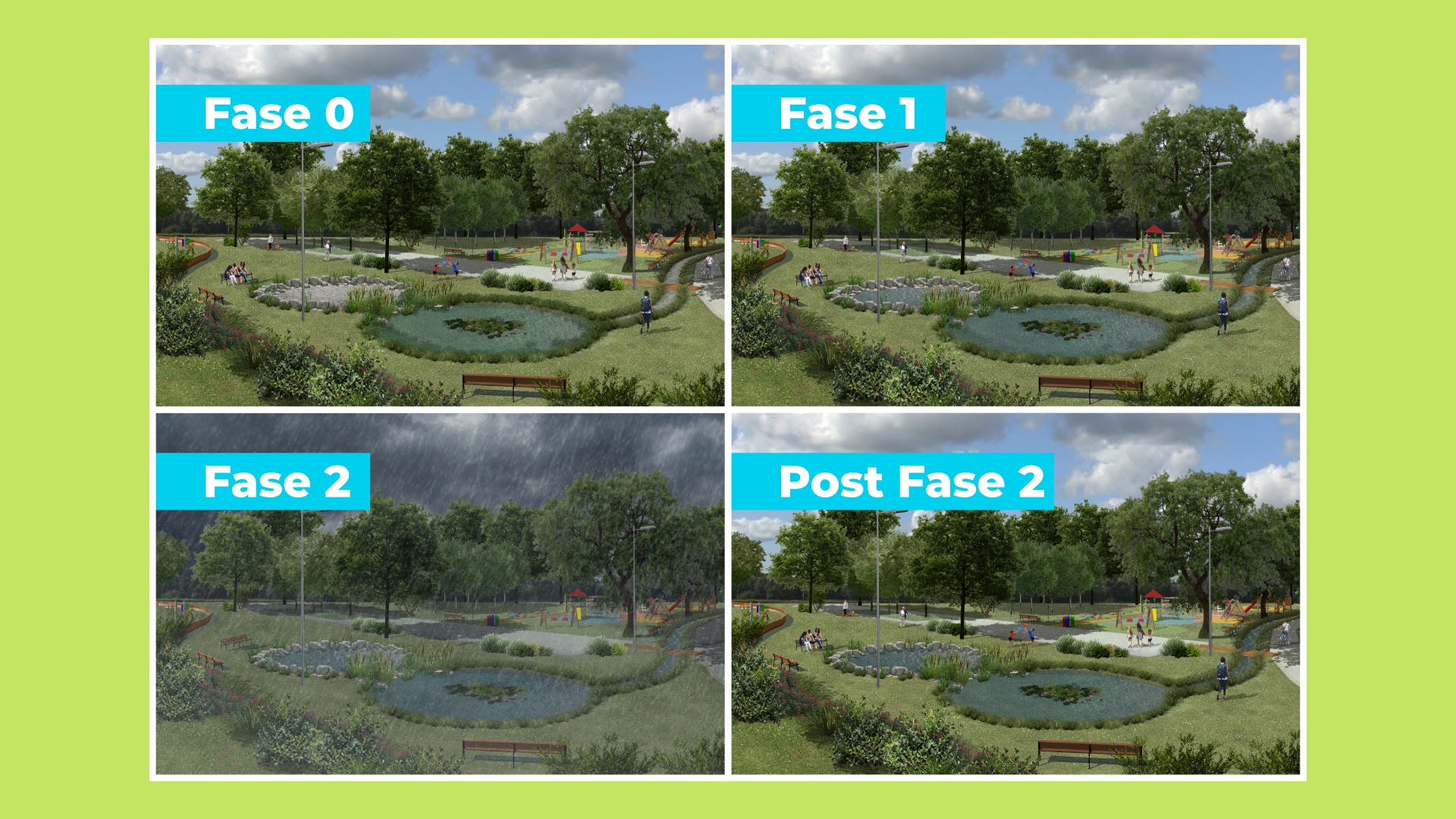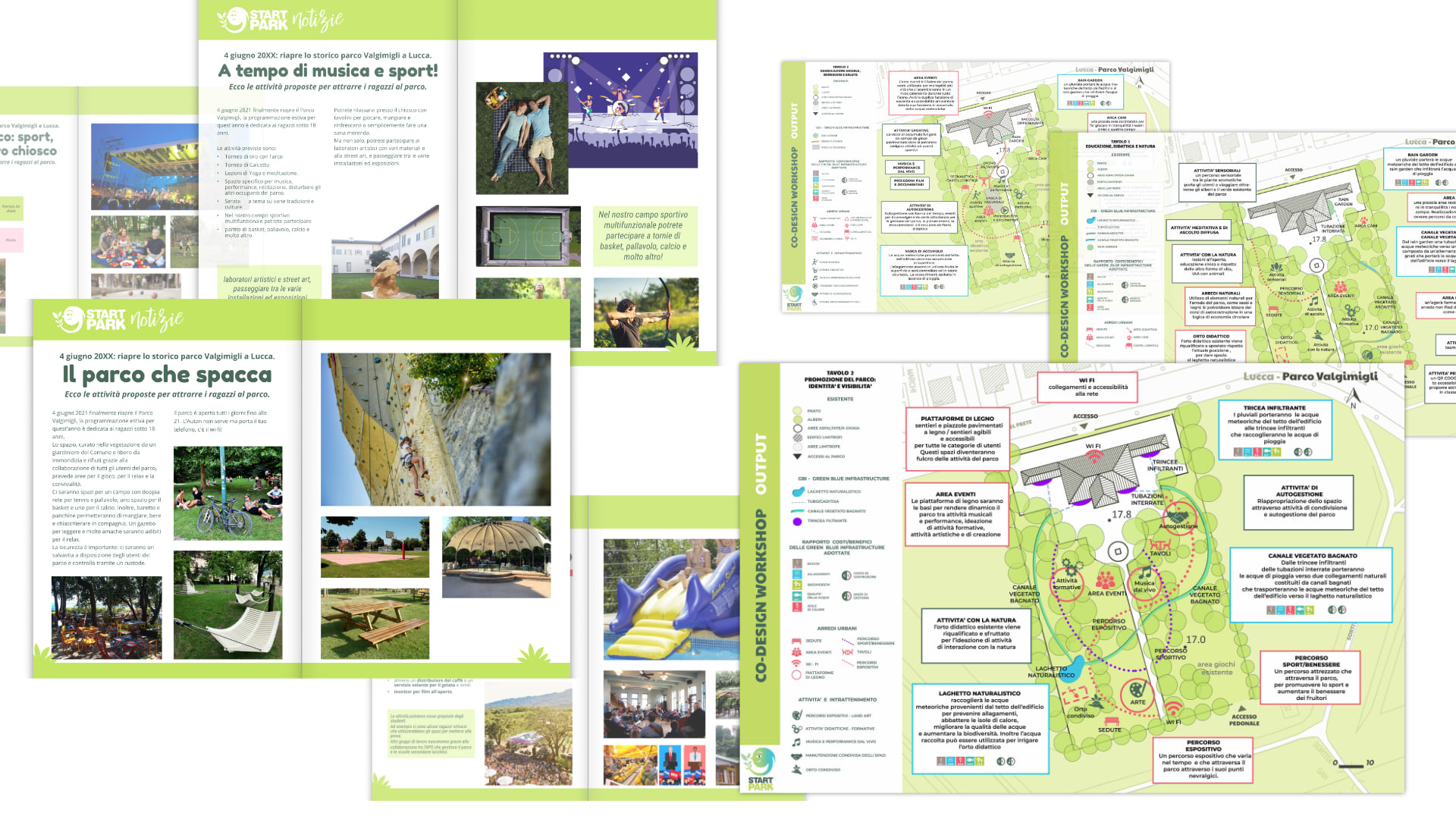Start Park
Basic information
Project Title
Full project title
Category
Project Description
Start Park is the co-design of green-blue infrastructures in urban parks to make communities more resilient to climate change and extreme weather events. The Start Park project enhances outdated design and architecture of city greenspaces through the use of nature-based solutions. The project diffuses climate change awareness to citizens and creates socio-economic value for private and public stakeholders.
Project Region
EU Programme or fund
Which funds
Other Funds
Start Park received two grants (total amount € 50K) from H2020-funded project Designscapes, in 2019 and 2020.
Description of the project
Summary
Start Park: a scalable co-design process to build urban resilient ecosystems to climate change.
Start Park (SP) is a process aimed to address the challenge of the Climate Change (CC) through the building of a resilient community involved in the co-design of a set of green-blue infrastructure (GBI) for urban green areas. The traditional top-down approach adopted by municipalities in the past has proved to be insufficient when dealing with environmental challenges. We could affirm that our cities' parks are already GBI their-selves, however, with Start Park local citizens are asked to co-design in a pre-identified green area a new set of Nature-Based Solutions (NBS), which are aimed to provide multiple benefits in response to the climate risks related to the CC and, in particular, connected to rainfall patterns (e.g. “water bombs”, droughts and heat island events, loss of biodiversity and deterioration of water quality in rivers). The resulting process has proven to be an effective strategy to involve local communities around urban parks and bring awareness to both locals and tourists visiting those areas about CC adaptation and urban green transformations.
Start-Park has been developed with a full bottom-up approach since its conceptualization. Born during a Climathon event in 2017, fully conceptualized with a workshop in January 2019 with citizens, designers, social innovators and NGOs, it has been prototyped in the city of Prato (IT) in a green area called “Giardini di Prossimità” thanks to the Designscapes II CALL award and has just been scaled in the city of Lucca (IT) in Valgimigli Park.
Key objectives for sustainability
Climate change (CC) issues are even more complex if considered in the urban context: spaces to implement solutions for CC adaptation and mitigation are very limited. Therefore, green-blue infrastructure (GBIs) offer a crucial advantage, as they can be designed so that the original use of the area is maintained; parks and public spaces can become elements against CC, remaining usable by citizens. However, the CC adaptation challenges cannot be addressed only with GBIs: citizens are a key part of the process, as potential adopters of environmentally-aware behaviours. Moreover, parks can be commons for citizens: Start Park was born not to be just the first CC urban adaptation outpost but a process for social aggregation, personal and collective well-being.
In particular, the macro-objective SP aimed to reach was initially defined as a design challenge “How might citizens and local actors contribute in raising cities’ resilience to tackle the more and more frequent extreme climate events (from droughts’ period to intense meteoric events)?”. From this, we came up with a systemic service that merged public/private interest, facilitated the growing co-design of resilient urban parks and shared awareness about the climate crisis. Specifically, SP overcomes the traditional top-down approach adopted by municipalities in the past and provides concrete solutions to CC effects in urban environments, empowering and transferring knowledge to citizens connected to CC effects, risks, mitigation practices, social innovation, design thinking mindset and co-design practices.
We met this multi-objective framework through both the conceptualization and implementation of two Start Park projects that brought the SP approach in two cities, engaged citizens around two urban green areas, co-designed and developed a set of socio-technical studies and results out of these.
Key objectives for aesthetics and quality
SP aims to connect people and urban green spaces via transferring scientific and technical knowledge about CC adaptiation strategies to citizens. Such an ambitious goal could not be reached without a great amount of attracting and user friendly set of communication and co-design tools. Specifically, during the past three years, SP Team have developed a scalable coordinated visual identity, have found a way to represent technical planimetry in an accessible, appealing and designy way and produced a card game with a set of illustration to transfer to workshops participants GBI morphology and functions. In order to reach these objectives we designed and developed:
- appealing and usable tools for co-design workshops using service design tools with particular attention to ergonomic and usability features (see picture 1);
- accessible urban parks’ planimetry (see pic. 2);
- an illustrated GBI card game, named Start Card, and short descriptions of elements that makes complex themes - climate change adaptation through GBI- understable (see pic. 3);
- developed of a replicable visual identity;
- proposed educational placemaking activities to citizens through self-construction prototyping sessions (see pic 4).
In terms of experience’s quality, SP targets three main challenges: a) lack of citizens participation in the CC mitigation, b) enhancing the empowerment dimension of co-design processes and c) abilitate project replication through open source materials. In order to reach these objectives we designed:
- forms of on the ground engagement through active recruitment and multi-channel promotion and communication
- learning by-doing workshops - i.e. placemaking and co-creation workshop, gamification workshop- in order to transfer skills, get involved about a green space and spark bottom-up actions.
- produced a series of open-source materials - i.e. SP white paper, pitch and concept presentations- in order to replicate a SP.
Key objectives for inclusion
The main challenge tackled by the project concerns spreading environmental awareness among european citizens through the co-design of urban green areas able to adapt to CC consequences. While co-designing a new set of GBIs, citizens participating in a Start Park project are asked to address social challenges emerged by interviews and observation within the area in which the park is placed. With a user centered approach, during the co-design sessions, actual and potential park users’ needs are constantly taken into consideration, firstly promoting the engagement and participation of an heterogeneous mix of citizens in terms of demographics and lifestyles, secondly using service design tools such as personas and stakeholders maps.
In these terms, in the last 3 years, when SP has been prototyped in a city and scaled in another one SP team have been involving “hard-to-reach targets” (people who are facing one or more kind of barriers in participating to co-design sessions) with light co-design events (called “social animation”) aimed at explore participants’ needs and foster conviviality among and in between them and the team. Respecting the peculiarities of each territory, among the others, high school students, unaccompanied minors, refugees, elderliests and local activists have been involved in the SP process in Prato and Lucca.
Results in relation to category
Several outcomes were reached by the Start Park project since its conceptualization in 2019. The most important outputs are following summarised:
- Winning of two Designscapes Call (€ 50K grants)
- About 200 participants involved in all the events, among which 30% under 18+, multiple representatives of local associations working in the field of social promotion or environmental awareness
- Two Start Park co-design respectively in Prato and Lucca (IT)
- Around 4k online users reached via social media and a Facebook Group dedicated online community
- Creation of 2 network of stakeholders in the context of Prato and Lucca interested in attracting funds to implement infrastructural works for the co-designed SP in Valgimigli Park
- Start Park website finalized and launched;
- Winning of Mediterranean Climate Heroes Contest - category: Tourism - by CMI-Marseille.
- Winning of Climathon Awards by Climate-KIC as “most improved idea” since 2015 and mentoring sessions with Microsoft Worldwide Sustainability team.
- Development of a first project proposal to launch a Start Park Kids and Teens format to access school programs;
- Definition of a set of impact measurement tools for SP (SP factor) which will enable the SP team in evaluating the outcomes of past, present and future SP replications around three key dimensions: environmental, socio-cultural and socio-economic;
- Development of an open-source SP Kit in order to replicate and diffuse the process;
- Development of a card-game in order to strategically leverage the gamification effect as means of learning and engagement for different stakeholders’ target; Also,we ideate a crowdfunding campaign - starting in september 2021 to support and promote the SPgame;
- Development of 2 pre-feasibility studies of co-designed Start Park in Prato e Lucca in order to advocate and enable policy makers to activate procurement processes.
How Citizens benefit
Citizens benefited from the SP project in different ways that went from climate change awareness to creative practices thanks to both the co-design and design thinking attitude transferred during SP workshops. As a matter of fact, by the means of the SP gamification experience, citizens have co-designed and enhanced outdated city greenspaces' through the use of nature-based solutions while being transferred knowledge and design mindset.
Through SP, citizens have understood how to influence local policy makers by means of both co-design thinking activities and social cohesion. Throughout the SP process citizens are encouraged, taking into account Jane Jacobs’s provocative notion of “bottom-up urbanism”, in generating new things -i.e. product, services, processes..- with the potential to transform the existence towards sustainability. We defined these forms of socio-technical systems as resilient communities.
Civil society has been involved by different means in order to affect the entire urban ecosystem. In particular: 1) Local associations become part of the SP partnership, acquired knowledge about a SP process and are ready to replicate an innovative approach in their local context; 2) Commercial activities, provided services during co-design events generating socio-economic impact and micro-economies; 3) Public Administrations exploited the potential of citizen engagement around sustainable urban policies. PA resulted as enablers and promoters of participatory and empowerment processes that link urban infrastructural transformation with sustainable design policies about the growing need of adapting urban ecosystems to climate change impacts. In this sense, we were able to measure direct economic spillovers on urban ecosystems developing of local micro-economies through: direct occupation for territorial players; indirect economic spillovers for local urban ecosystems developing pre-feasibility studies for infrastructural works and future services
Innovative character
Start Park represents an innovative process that envision a future where community-based practices can drive a culture based on resilient urban transformations. In particular, SP embeds a set of innovative services in its value proposition. First, the SP Card Game leverages gamification dynamics as a collaborative urban design thinking approach. Second, the accessibility of our resilient urban transformation processes enable and engage citizens in both understanding and designing ecosystemic services in green-blue areas. Third, the architectural and engineering practices - e.g. development pre-feasibility studies, planimetry development and sharing, scenario design of nature-based solution (see pic. 5) - are rethought through a collaborative design thinking approach. Last, the SP Factor creates a new framework eto measure impact of participatory processes focused on sustainable urban development. Also, the SP Factor intertwines value-dimension of knowledge transfer and upskilling impacts on:
- Socio-cultural impact: Knowledge transmission and sustainable thinking with respect to climate change and sustainability, GBI and other resilient practices, design tools and processes (co-design, design thinking, prototyping), strengthening of both digital and remote collaboration competences (see pic. 6); engage in the training every public-private stakeholder’s category (e.g. schools, public administrations, NGOs, industry players and SMEs).
- Socio-environmental impact: Impact assessment and train (potential and effective) on GBI impact on climate change adaptation strategies, Design of sustainable and resilient services, Design autonomy and stakeholders' behavioral changes.
- Socio-economic impact: Contributes in innovative and green and sustainable thinking skills gathering for the job market; Facilitate new stakeholders' network creation.

